Skip List
Definition
Skip list is a probabilistic datastructure where it's created base on a sorted link list.
The datastructure looks like below:
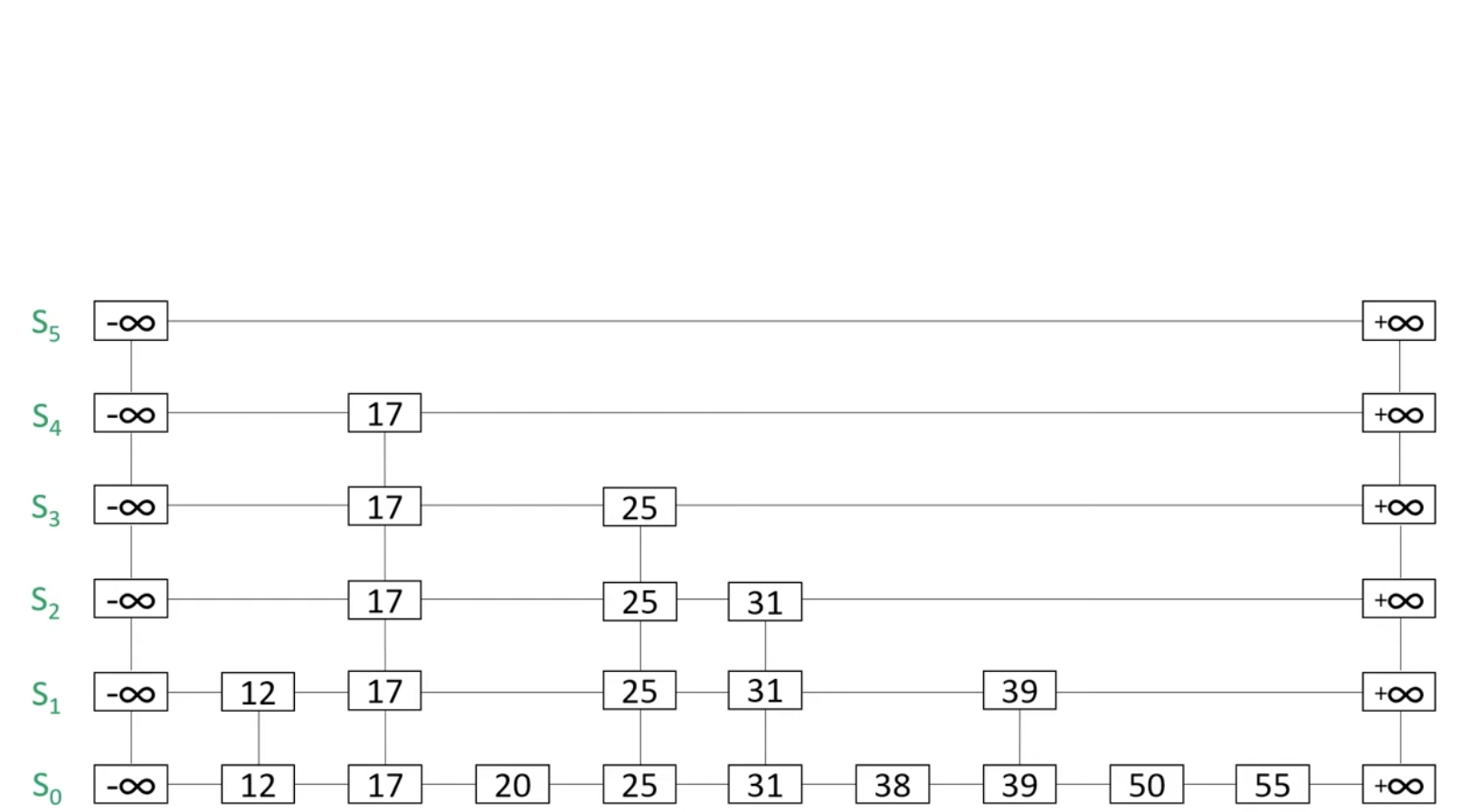
This is a sorted linked list, sorted from the left -> right.
In here the bottom level it's a sorted linked list, with the list node defined as below:
class ListNode:
above: Optional[ListNode]
left: Optional[ListNode]
right: Optional[ListNode]
below: Optional[ListNode]
val: int
The above level (, , … ) are called express lane. Which is created base on a probability.
So for example, everytime at a node, we going to flip a coin with chance of probability. If it's head, we're going to copy that node to the above level, if it's tail, we do nothing.
Search
When searching for a node, we search from the top-left node of the skip list:
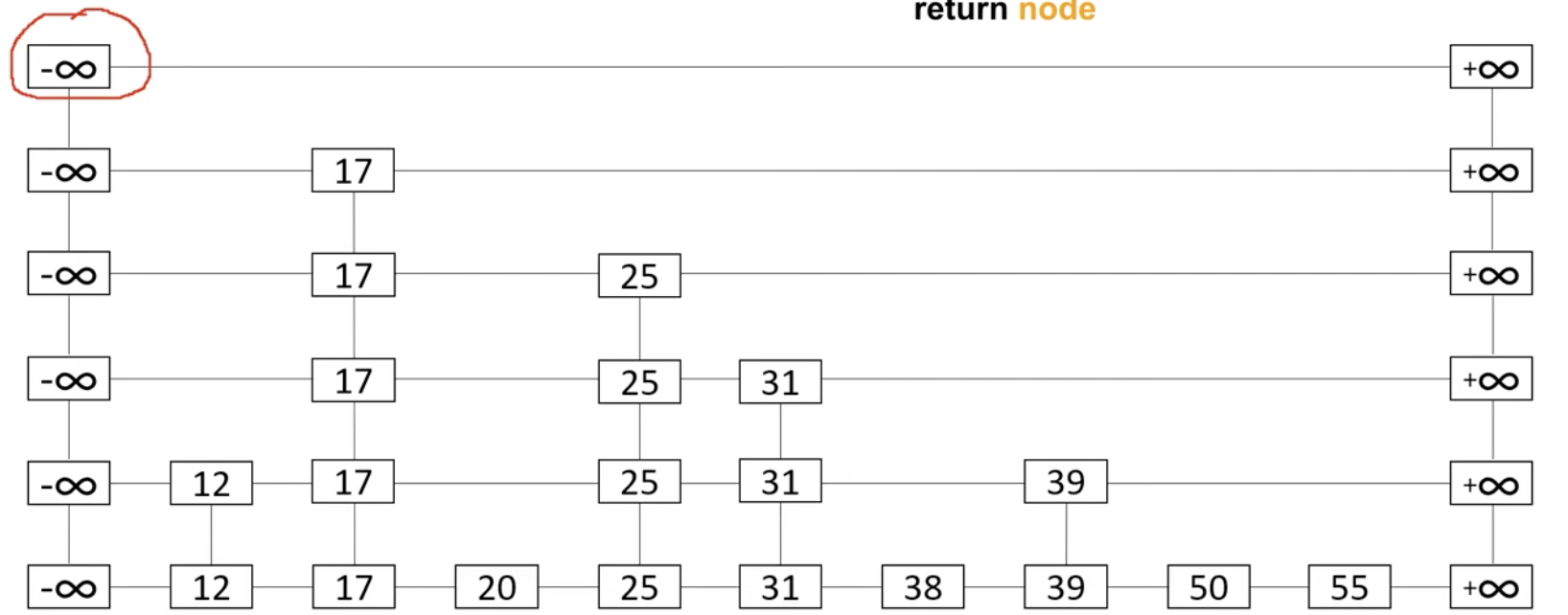
We basically go down first and then go right.
So in this case, for example if we need to search for node 0.
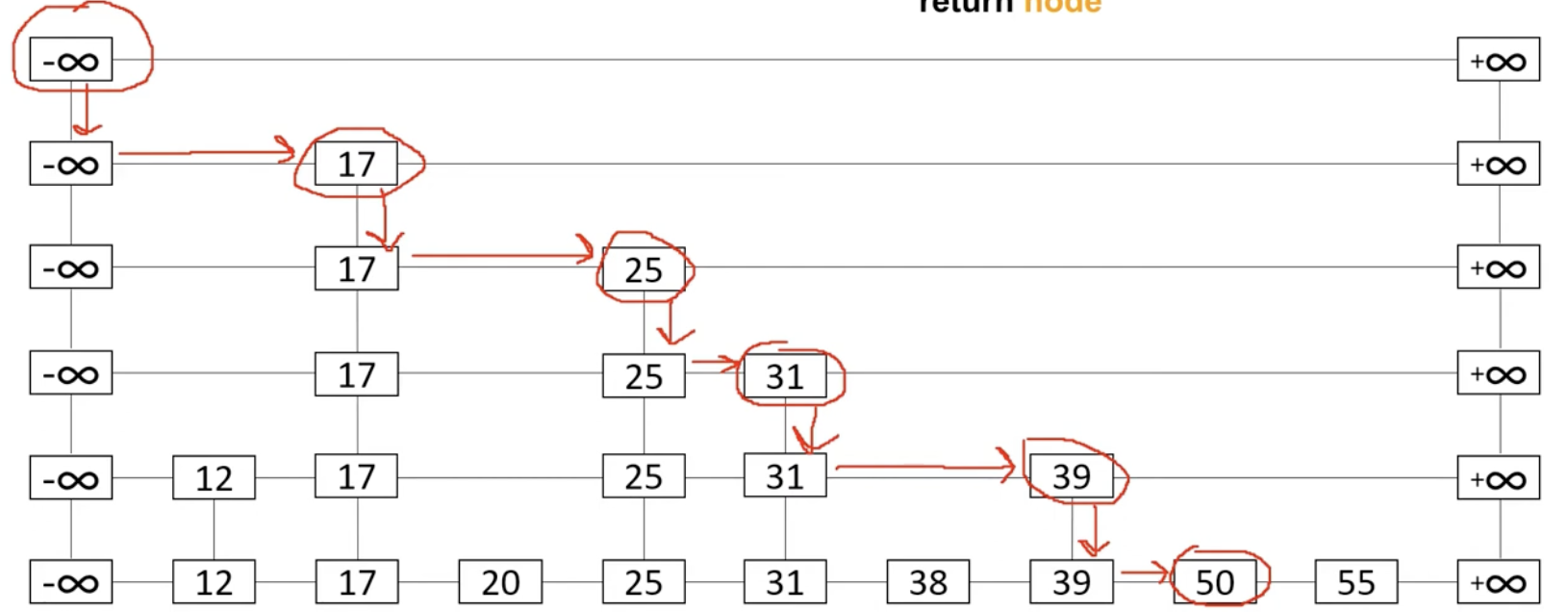
In here, since we cannot drop down anymore, we've found the node.
Pseudo code
search(n):
node = start
while node.getBelow() != null
# Go down
node = node.getBelow()
while node.getNext().getVal() <= n:
# Go right
node = node.getNext()
return node
Time complexity: — since we keep dropping down the tree
What if the key doesn't exist
For example if we're searching for 49, the following will happen:
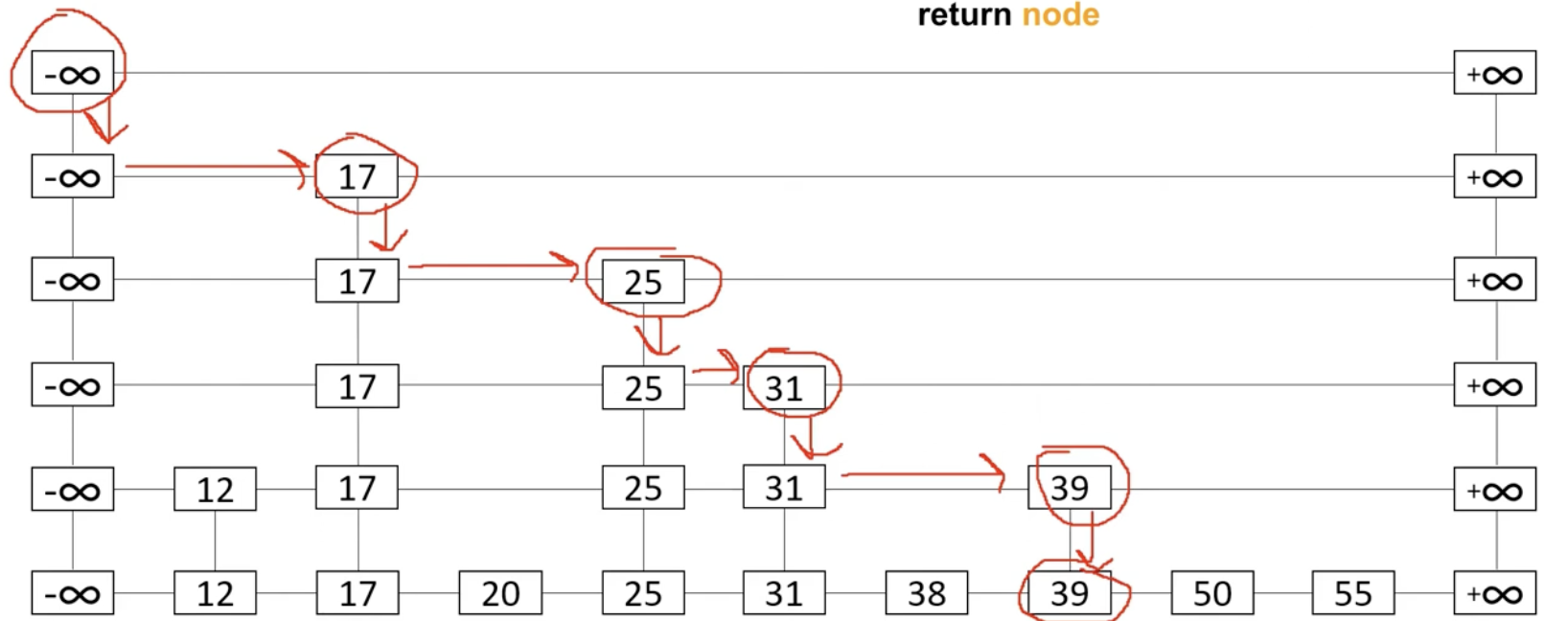
Base on the algorithm, it will return 39 because we're finding the largest node <= 49
Which key would we return if there are multiple key
For example if we're searching for 17 which appears multiple time in the second column
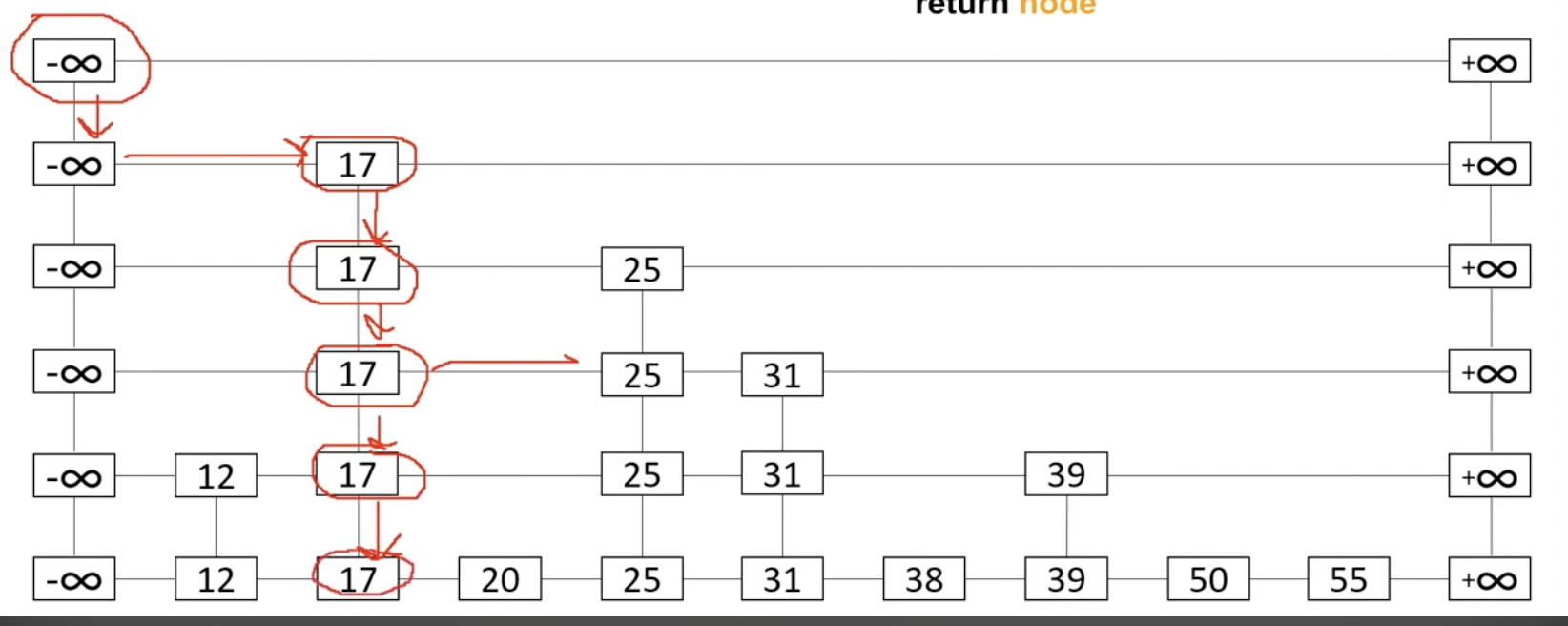
In this case, we will return the bottom level node
Insertion
We need to search for the key first.
For example, in this case, we will add the node 42. That means we need to search for something <= 42
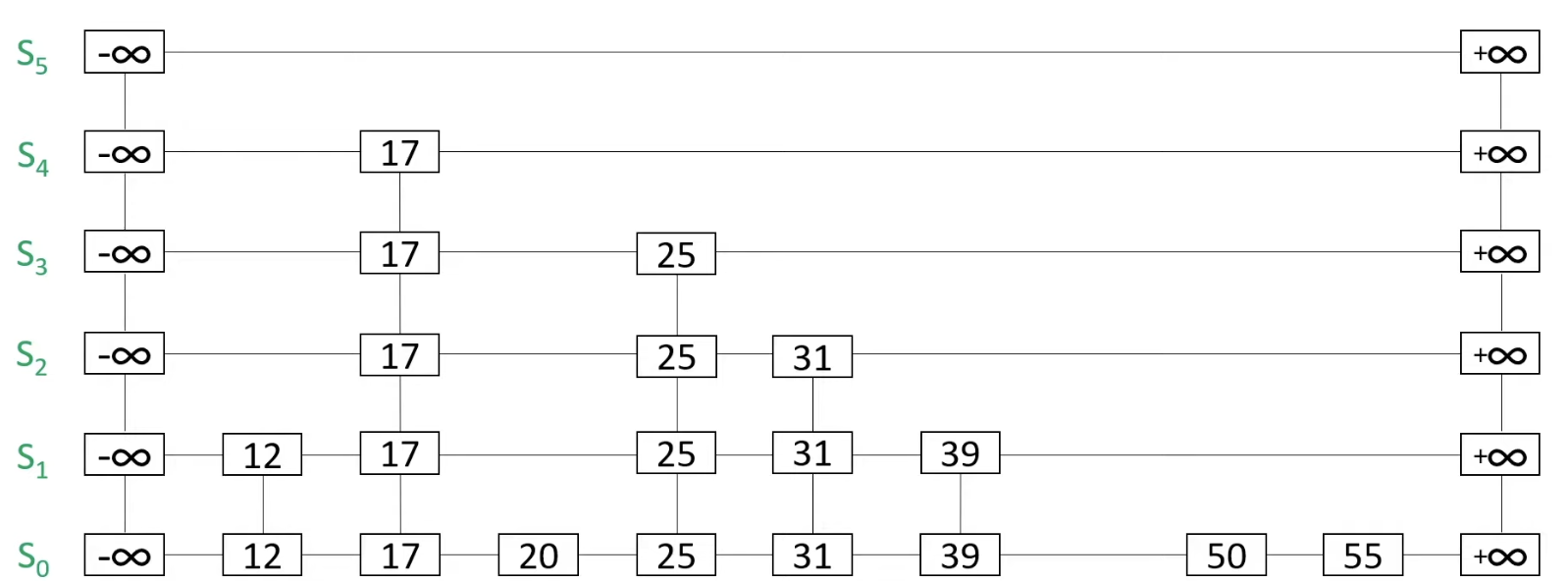
In this case, we can perform the above search operation. As a result, we obtained 39 at the bottom level.
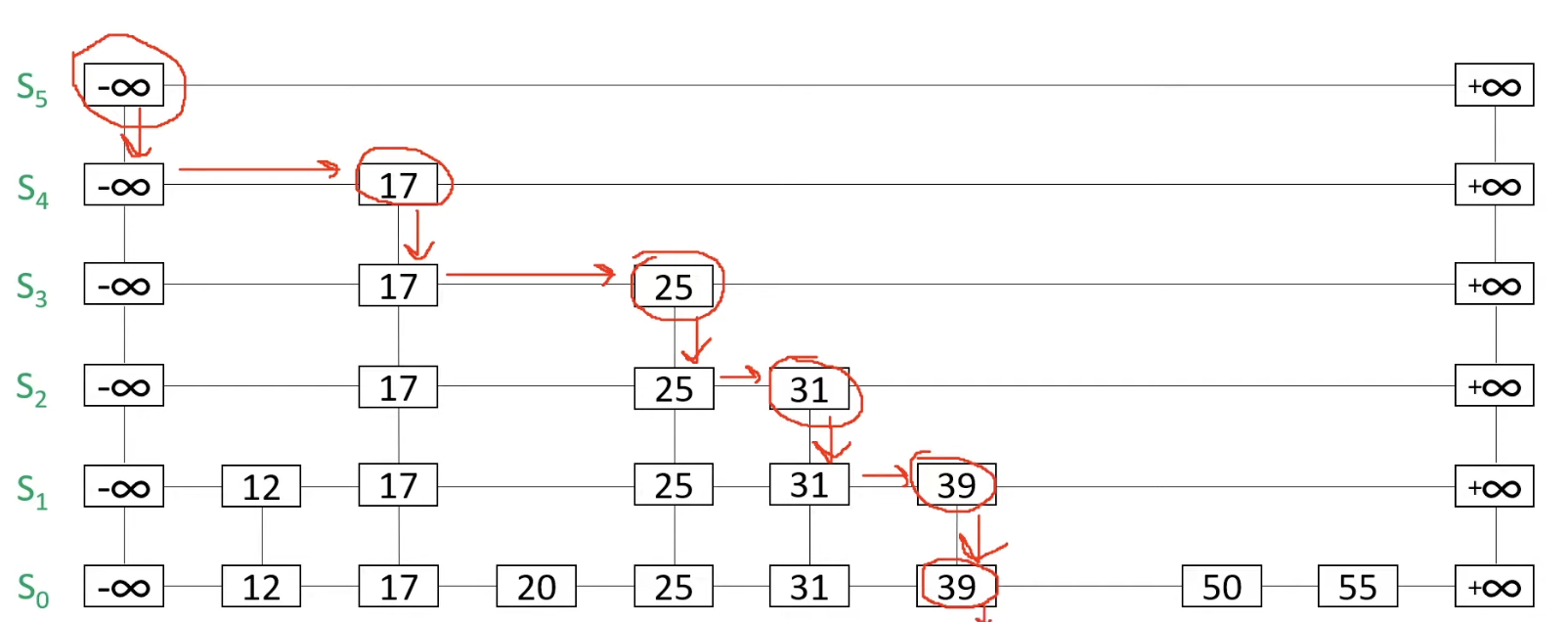
As a result, we can add 42 in between 39 and 50.
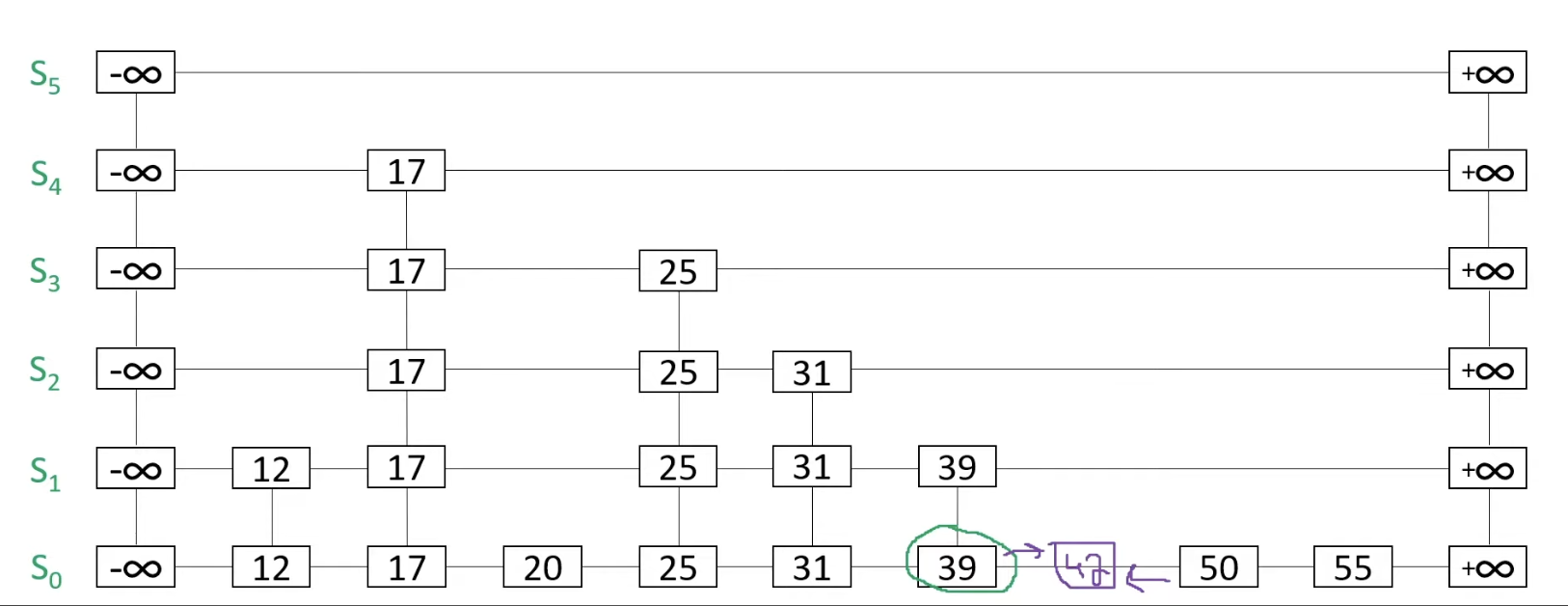
Now we're going to flip the coin, if it's head, we're going to add a node to the above row, if it's tail, we do nothing.
For example, we flipped the coin and it's head. As a result, we will add 42 in the above row:
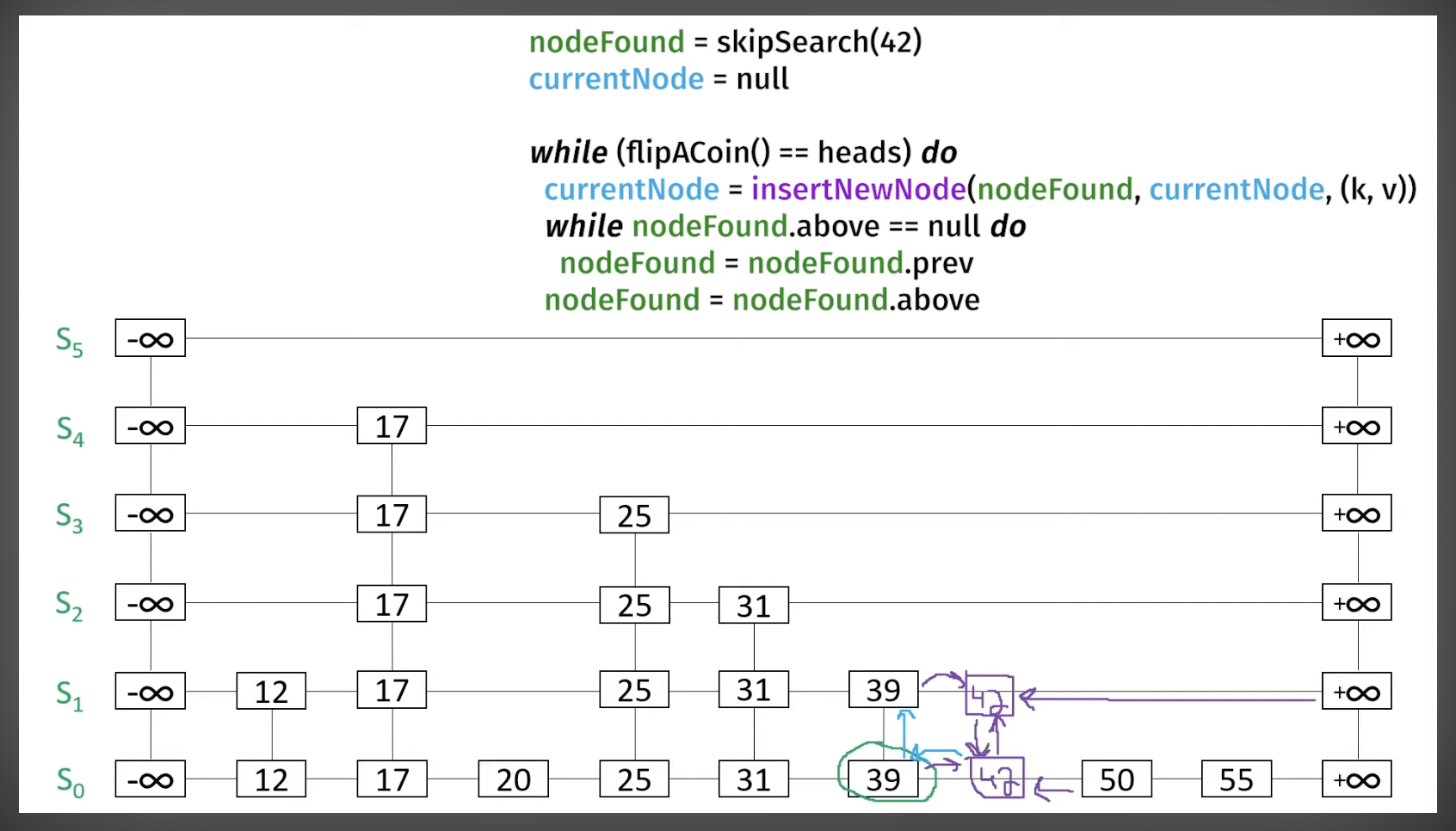
So we:
- Assign
S_0.42.above = new ListNode(42) - Assign
S_1.42.below = S_0.42 - Find previous node of
S_0.4that hasabove:(39)- Assign
S_1.39.next = S_1.42 - Assign
S_1.42.previous = S_1.39
- Assign
Similarly, if we roll the dice again and get head, we insert 42 in the above. So we go below
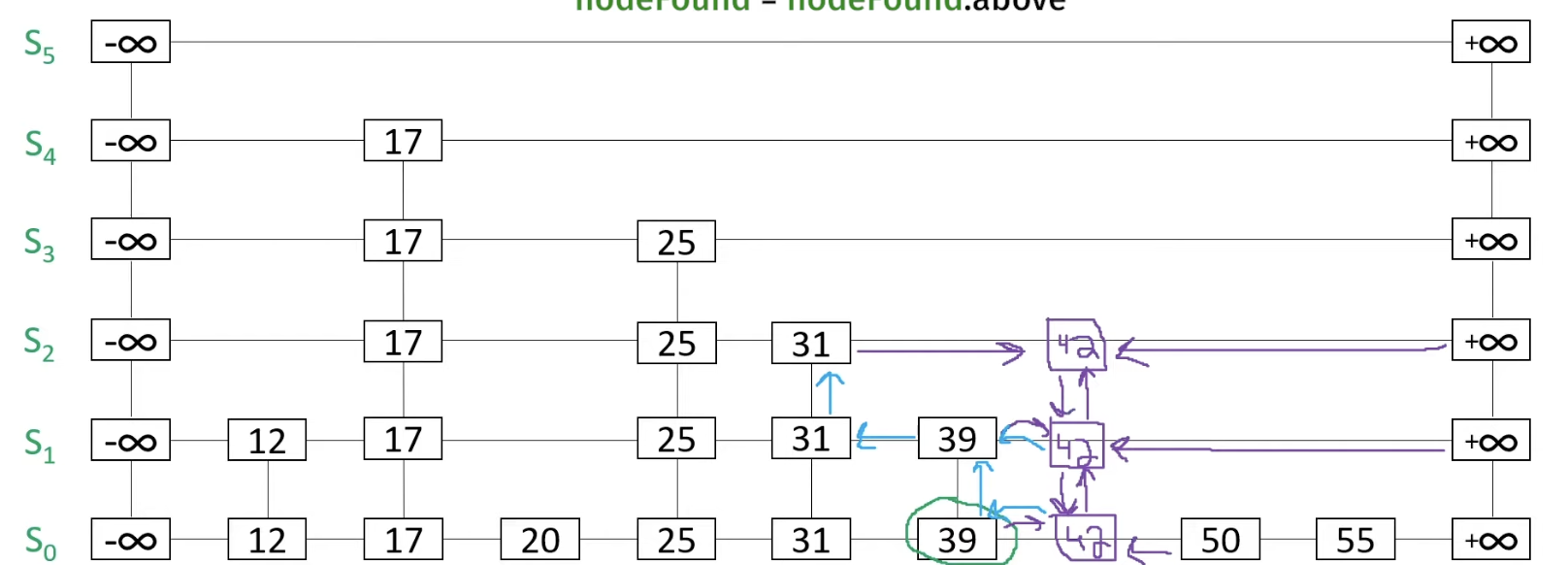
So at S_2.42, we go down to S_1.42 and then find the previous node that has above (S_1.31). We then connect S_2.31 to S_2.42.
Next, if we flip the coin, and it's tail, we stop the operation.
Pseudocode
nodeFound = search(42)
while (flipCoin() == heads) do
nodeFound.next = ListNode(42)
# If doesn't have the above node
while nodeFound.above == null do:
nodeFound = nodeFound.prev
nodeFound = nodeFound.above
Time complexity:
Deletion
Let say we want to delete 25
We also use the search operation to 25. If it doesn't exist (the return node is not 25 then we return null)
So after searching for 25, we have:
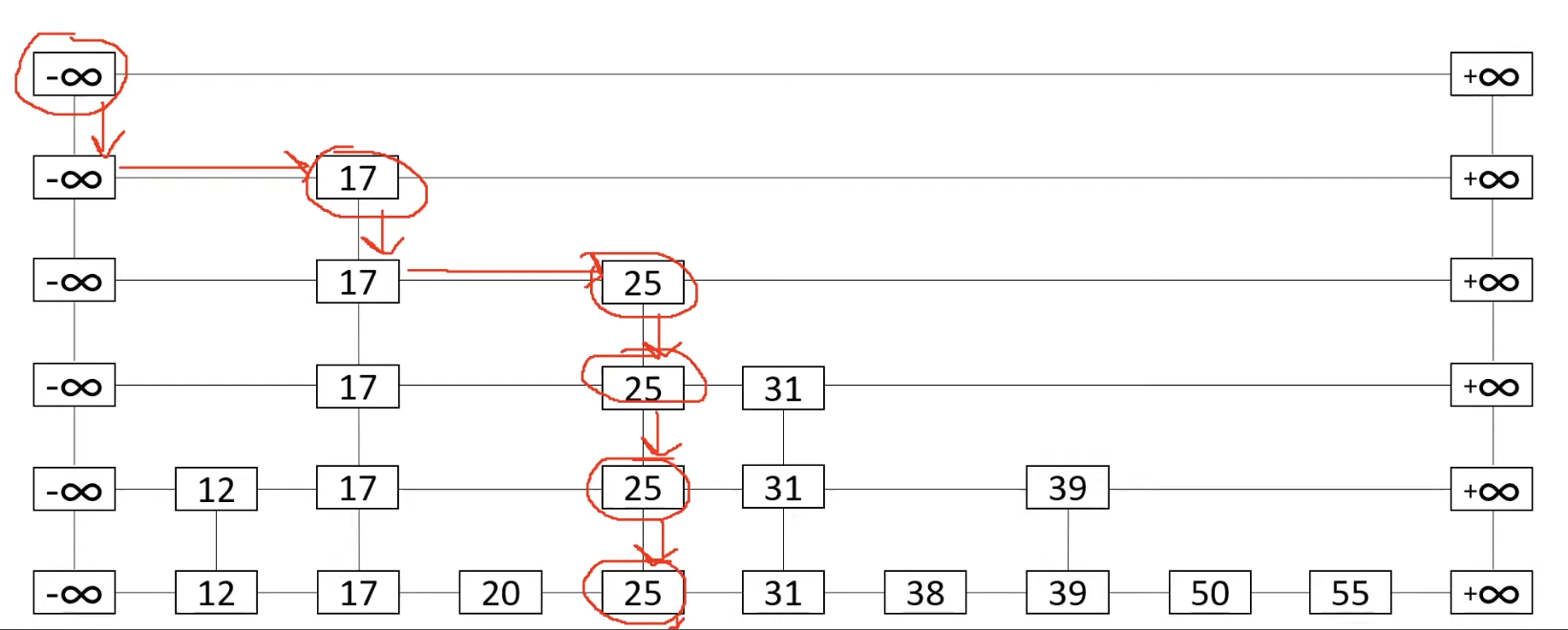
In here since the node is indeed 25, we can delete.
In here we going to map 20 -> 31 and 31 -> 20 (bypassing 25)
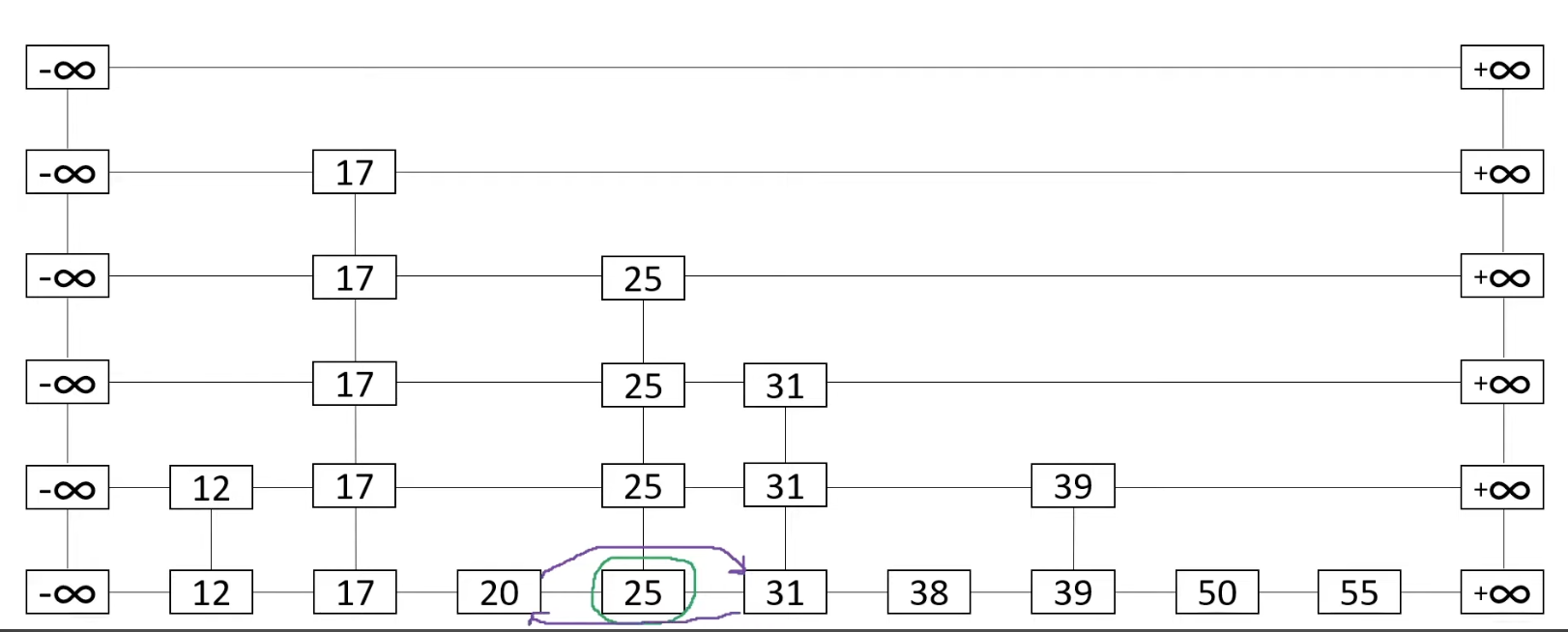
After that, we go upper level and do the same thing: 17 -> 31, 31 -> 17
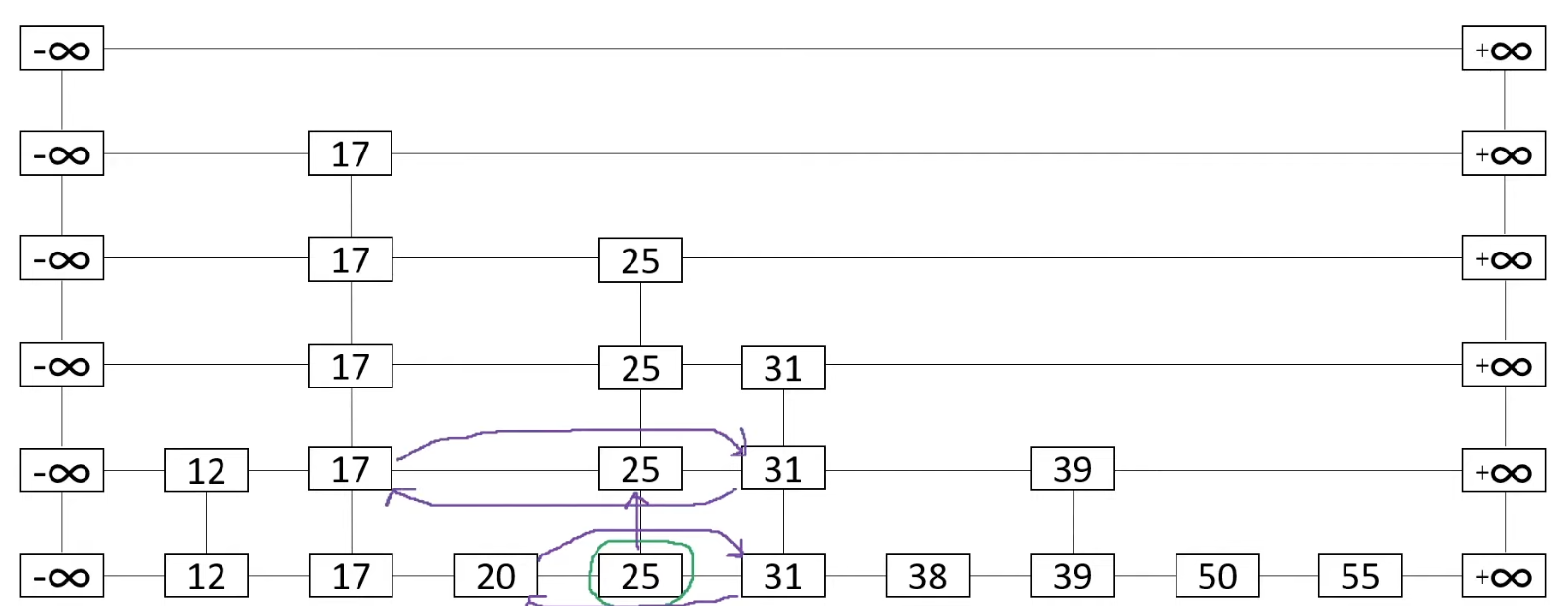
We continue to go up again and do the same thing
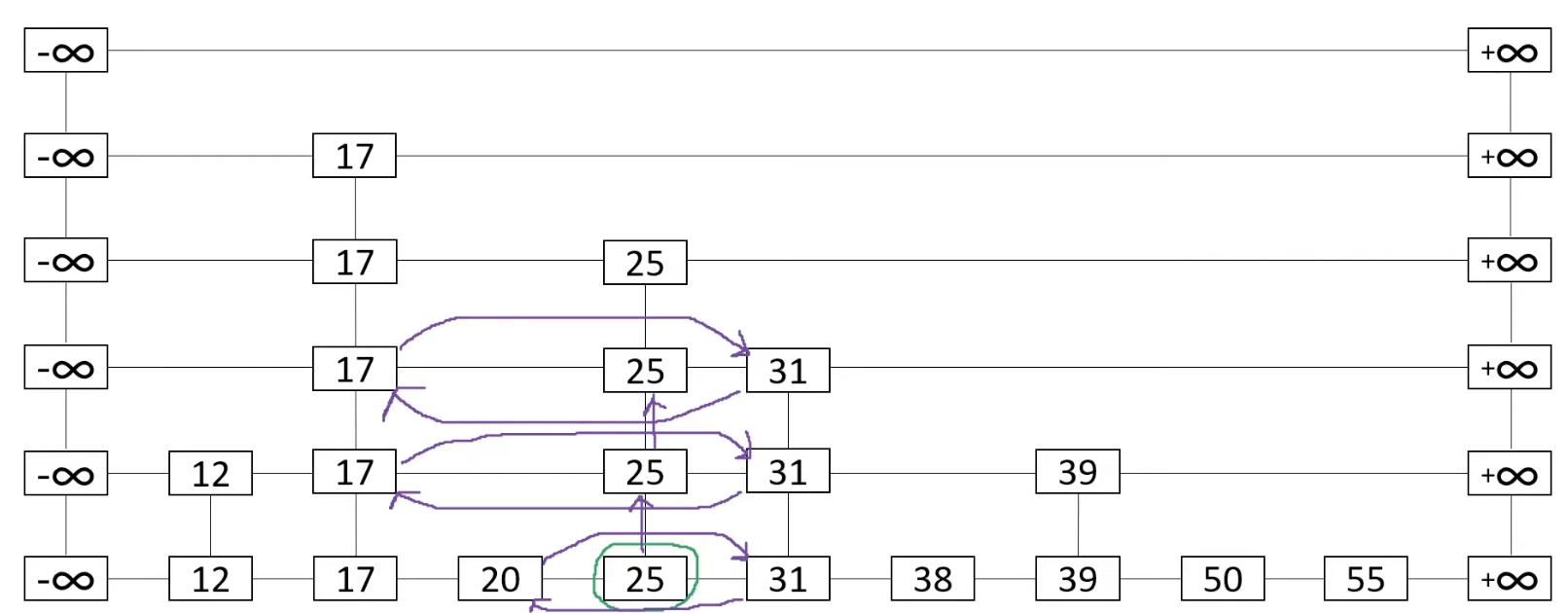
And go up again
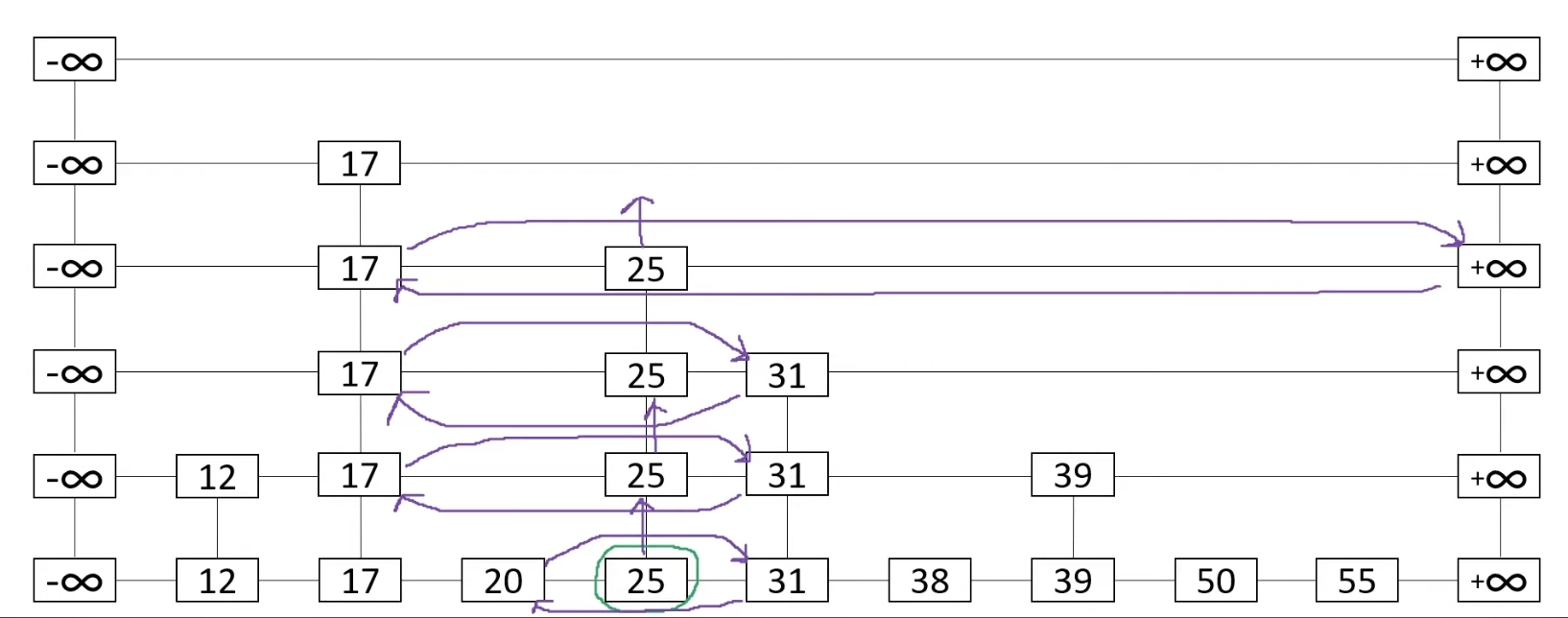
Since 25 has no above node, we stop
Pseudo code
nodeFound = search(25)
if nodeFound.val != 25: stop
while (nodeFound != null) do
nodeFound.prev <-> nodeFound.next
# If doesn't have the above node
nodeFound = nodeFound.above
Time complexity: — since we're traversing through the height of the tree.